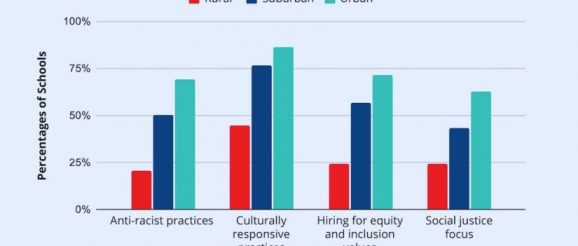Exclusive: New Analysis — Trends in Education Innovation from 161 School Leaders – The 74

Sign up here for The 74’s daily newsletter. Donate here to support The 74’s independent journalism.
Pockets of innovation scattered across K-12 classrooms won’t be sufficient to address the challenges the nation’s schools face. Meeting the moment will require moving beyond patchwork solutions toward durable, coherent innovations that become deeply embedded in schools. Fortunately, educators around the country are showing what it looks like to embrace the strengths, passions and needs of each student, particularly those who have been historically underserved.
A new analysis out this morning by the Canopy Project — a collaborative effort among 161 school leaders to surface and share information about K-12 innovation, coordinated by the Center on Reinventing Public Education and Transcend — provides an overview of some of the most exciting trends in K-12, as described directly by the school leaders who are shaping them. For example, innovative schools show a clear trend toward redesigning the what and the how of school to meet the varying identities of students, particularly those who are traditionally marginalized. For instance, schools serving higher-than-average proportions of kids with disabilities were more likely than others to offer accommodations for all students, rather than only for those with Individualized Education Plans — empowering all kids to determine their own pace in learning.
For Principal Jessica Tunney of Tomorrow’s Leadership Collaborative, a public charter school in Orange, California, universal accommodations and inclusive instruction have strengthened relationships between students with and without disabilities. Her school incorporates play into instruction and finds creative ways to increase access; for example, introducing sign language as a communication strategy for English learners and nonverbal students alike. Tomorrow’s Leadership Academy’s model is built around co-teaching, so every classroom has a general education specialist and a special education specialist — affording all students the benefit of the expertise of both. Scheduled collaboration time for teachers is held sacred, and educators are expected to co-plan and co-lead lessons that are inclusive of every student’s academic and social needs.
Tomorrow’s Leadership Collaborative is but one example of schools that reflect Canopy’s innovation imperative: Among the 161 learning environments surveyed, 88% reported a focus on students with disabilities, 86% on economically disadvantaged kids and 74% on children of color.
Schools with high proportions of economically disadvantaged students were more likely to report using a trauma-informed approach to learning. They were also more likely to have expanded hours and additional services to support students’ physical well-being and mental health, compared with other schools. Trauma-informed teaching and learning is also on the upswing overall; over the past two years, it’s become the most frequently added practice reported by Canopy school leaders. In this approach, adults are trained to recognize and respond to students who have been impacted by traumatic stress, and students are provided with clear expectations and communication strategies to guide them through stressful situations.
Canopy schools that enroll mostly students of color were more likely to report taking culturally responsive approaches, focusing on social justice, implementing antiracist practices and hiring for equity and inclusion — for instance, by including student and community members on the interview committee. Leaders in these schools were also more likely to report using lessons that feature real-world problem solving. For example, Fannie Lou Hamer Freedom High School, a public school in the Bronx, focuses on political involvement and student activism. Students recently petitioned local legislators to rename their street to honor Hamer’s legacy and to educate the community about her contributions to social justice.
Not Just Recovery, But Reinvention: Lessons in COVID School Innovations
Schools that enroll a higher-than-average number of emergent bilingual students were about twice as likely as other Canopy schools to report offering dual-language programming. Interestingly, schools serving more students with disabilities were also twice as likely to offer dual-language programming. Among only 16 schools citing this practice, many seemed to focus on meeting the needs of both emergent bilinguals and students with disabilities. For instance, Vimenti School, in Puerto Rico, offers bilingual education for a student population where 38% have disabilities, and Albuquerque Sign Language Academy offers dual-language programming in English and American Sign Language in a school where 55% of students have disabilities.
Canopy schools show clearly that innovative education isn’t something fleeting or for privileged students only — for many, it’s an antidote to inequities that are endemic to public education. Canopy schools represent many geographies, governance structures, racial identities and income brackets. But our analysis shows that all are reimagining learning environments to be more dynamic and responsive to students’ needs, no matter where they’re located or which children they serve.
Disclosure: The Carnegie Corporation of New York and the Overdeck Family Foundation provide financial support to the Canopy Project and The 74.
Get stories like these delivered straight to your inbox. Sign up for The 74 Newsletter
